Genre: Platformer Developer: Iguana Ent. Publisher: Sunsoft Players: 1 Released: 1994
Video game developers have long appreciated the power of a popular franchise. Sega was established through her Sonics, Eccos, and Shinobis. Nintendo; with Mario, Link, and Samus. Konami had her Contras and Castlevanias. And as for Sunsoft, she brought to life Blaster Master and Aero the Acrobat. With these franchises in its portfolio, it is little surprise that Sunsoft struggled throughout most of the 16-bit era.
Enter Zero the Kamikaze Squirrel, Sunsoft’s valiant if not overzealous attempt to cash in on the whole “bad ass super mascot” craze. The title character is clad in a bandana and ripped jeans, employing shurikens and nunchuks to dispatch his enemies. First having appeared as a villain in Aero the Acrobat, Zero now takes center stage as he travels home in an attempt to prevent the evil Jacques Le Sheets from cutting down the entire forest.
Why on earth, you ask, would an evil French lumberjack want to cut down Zero’s beloved home forest? Firstly, because he’s evil, and a lumberjack… though I fail to see how his being French is of any consequence. Secondly, because he’s a ridiculous villain, and every game of this nature needs a ridiculous villain. And lastly, he was processing the trees to pump out enough counterfeit money to buy a small country or, say, save Sunsoft from filing for bankruptcy. But really, the plot of a platformer such as this is nothing more than an excuse to get the action started.
Once the game does get rolling, you’ll be quick to notice that its graphics hold up rather well against other 16-bit platformers. The game is quite colorful, featuring numerous levels that sport an impressive degree of graphical variety. The attack animations of both Zero and his foes are pleasing to the eye, though the lineup of enemies is sparse and repetitive. The bosses are not particularly noteworthy in terms of visual design, but their inclusion offers a more than welcome break from the bland platforming and monotonous swarm of foes that would otherwise put gamers to sleep.
The audio content is passable, but not spectacular. Your eardrums will not be bothered much by Zero’s kung fu screams or the low-key music that seldom draws any attention to itself. A few tracks add a bit of flavor and atmosphere to some of the levels, but it’s highly unlikely that you’ll give the music a second thought after you’ve put the controller down. The sound effects are standard fare, leaving one with the impression that this was no labor of love from the game’s audio department.
As for the controls, they more than suffice. I must admit that I somehow managed to beat the game while still feeling awkward with the controls, but upon playing through a second time, controlling Zero had become second nature to me. Zero has the standard jump, and this can turn into an upward thrusting flip if you tap the jump button a second time whilst in the air. This maneuver is invaluable, granting you access to many secret areas and saving Zero from falling into molten lava or bottomless pits. The game also features close to a dozen terribly frustrating “super dive tests”, which may drive you insane before the game has ended.
The game’s fundamental weakness, in my eyes, is in its level design. Too many times did I get crushed by boulders that fell from the sky with no warning or be ground to a pulp because I was forced to free fall into the unknown, which turned out to be a death-dealing machination of our dubious villain. While it is easy enough to avoid death with a second run through such areas, it’s rather unfair that a gamer must simply die from time to time in order to learn what traps are awaiting them. Mercifully, extra lives are abundant and relatively easy to acquire, and the player is provided with limitless continues.
Questionable is the lack of passwords or a game save feature, meaning that you must always start a new game from scratch. There is also no way to adjust the difficulty setting, and it took me and my pitiful gaming skills merely four hours to complete the game on my first sitting. The difficulty level is challenging enough to prevent the player from simply walking through each level, but it can easily be beaten by you or your grandmother, assuming she’s into those newfangled Sega Genesis games.
Ultimately, the experience proved to be a fun and meaningless fling, but there just wasn’t enough there for a longer term relationship. Most aspects of the game are solid at best, with no particular moment or feature standing out as spectacular. And without enough substance to draw gamers back for more than a game or two, what has become of poor Zero? He and his game are sitting neglected in bargain bins or landfills across the world, I would suspect. While this game probably won’t ever rank as “classic” on any gamer’s list, Zero remains a flawed but reasonably enjoyable alternative to the more revered 16-bit platformers of his day and well worth the pittance he fetches on eBay.
SCORE: 6 out of 10


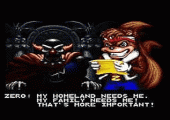
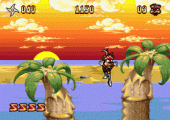
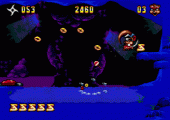
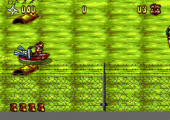
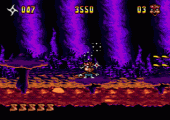
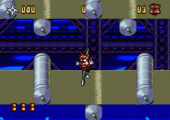
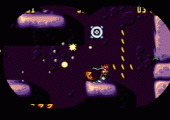
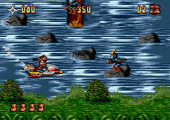
Recent Comments